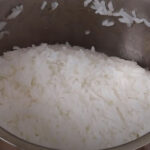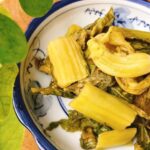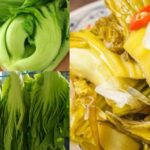Rice vinegar is an indispensable seasoning in the kitchen. You can use it to season dishes, make dipping sauces, or clean food and household items.
Rice vinegar is widely available in the market. However, you can also make it at home with natural, easily accessible ingredients.
Make your own rice vinegar at home with 3 simple ingredients
You can easily make rice vinegar at home using white rice, white sugar, and alcohol. One batch will give you enough vinegar to last for a long time.
You will need 200 grams of white rice, 20 grams of white sugar, and 500 grams of boiled water. Additionally, prepare a glass jar for storage. You will also need some high-proof alcohol to sterilize the jar.
Rinse the rice twice to ensure it is clean. Be gentle and avoid rubbing the rice too hard as this may remove its nutrients. A light rinse will be sufficient to remove any dirt or debris.
Place a pan on the stove and add the rice. Turn the heat to high and stir continuously until the rice is dry. Once the rice appears dry, reduce the heat to medium and continue stirring until the grains turn golden and emit a fragrant aroma. Turn off the heat and transfer the rice to a clean tray, spreading it out to cool down quickly. During the roasting process, make sure to stir the rice constantly to ensure even cooking and prevent burning. Typically, it takes about 15-20 minutes for the rice to turn golden.
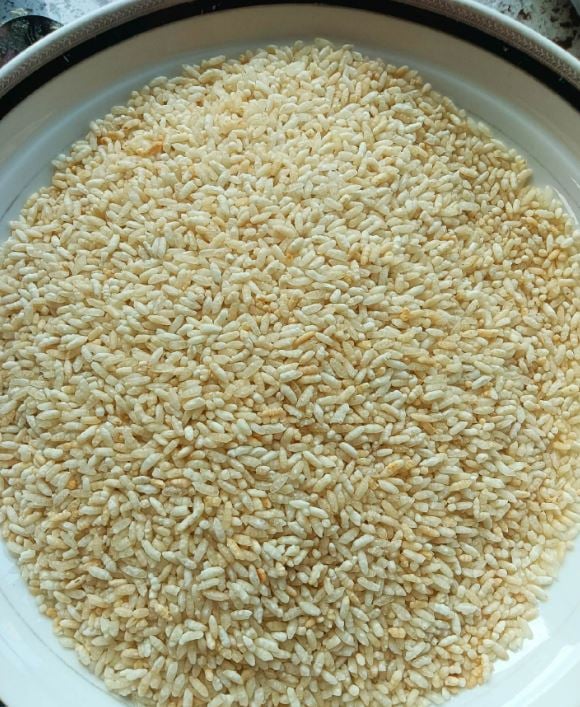
To make rice vinegar, you need to roast the rice until it turns golden.
The jar used for fermenting the vinegar should be clean and have a lid. Preferably, use a glass jar to ensure safety. Sterilize the jar by boiling it in hot water and allow it to dry completely before use.
Alternatively, you can use high-proof alcohol to sterilize the jar. Pour the alcohol into the jar, swirl it around, and let it sit for a while until the alcohol evaporates. The alcohol will also help prevent spoilage.
Once the jar is dry, add the rice and sugar (in a 1:10 ratio) into it. Pour in the boiled water and stir the mixture with a clean chopstick until all the ingredients are well combined. The amount of water added will affect the sourness of the vinegar.
To enhance the flavor of your vinegar, you can add a chopped apple to the jar along with the rice. Make sure to wash the apple thoroughly, rinse it with boiled water, and let it dry before adding it to the jar.

In addition to the main ingredients of rice, sugar, and water, you can add an apple to give your rice vinegar a delicious flavor.
Fermentation time for rice vinegar
Cover the jar and store it in a cool, dry place away from direct sunlight. Allow the mixture to ferment for about 15 days to transform into vinegar.
The resulting rice vinegar will have a slightly cloudy white color, a pleasant aroma, and a mild sour taste, distinct from commercially produced vinegars. You can test the sourness to see if it meets your preference. Once it’s ready, strain the vinegar into a clean bottle, seal it, and store it in a cool, dry place.
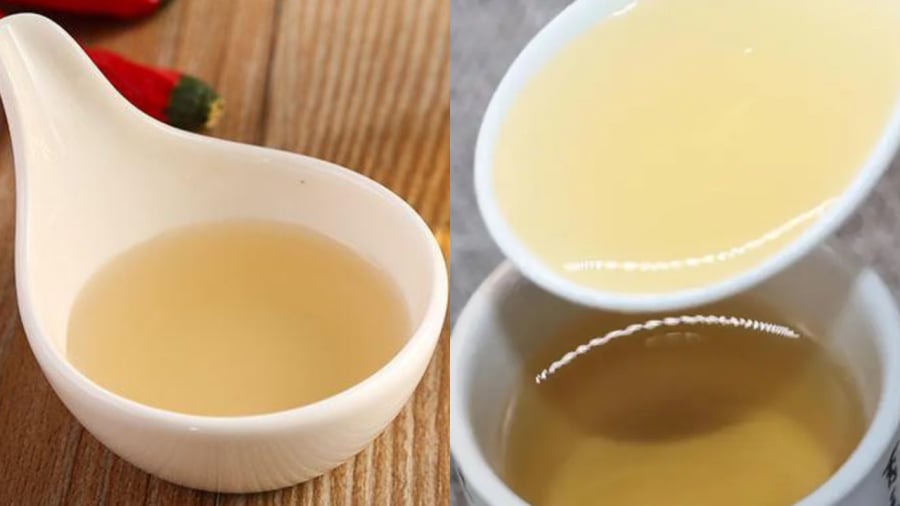
Homemade rice vinegar has a pleasant aroma and a mild, less sharp taste compared to industrial vinegar.
When making vinegar, if you prefer a stronger sour taste, reduce the amount of water used during the fermentation process. Conversely, if you desire a milder sour taste, increase the amount of water. However, ensure that the rice is fully submerged in the water, with a minimum distance of two fingers between the rice and the water level, for optimal fermentation and to prevent mold from forming.
You can also experiment with different types of rice to create unique colors and flavors in your vinegar.
“The Ultimate Guide to Cracking Without a Potter’s Wheel: A Simple 2-Ingredient Method”
Creating your own mosaic tiles at home is a fun, convenient, and cost-effective way to add a unique and personalized touch to your space. With a bit of creativity and some simple tools, you can transform everyday materials into stunning mosaic masterpieces that will impress and inspire. So, get ready to unleash your inner artist and discover the joy of crafting your very own mosaic tiles!

























